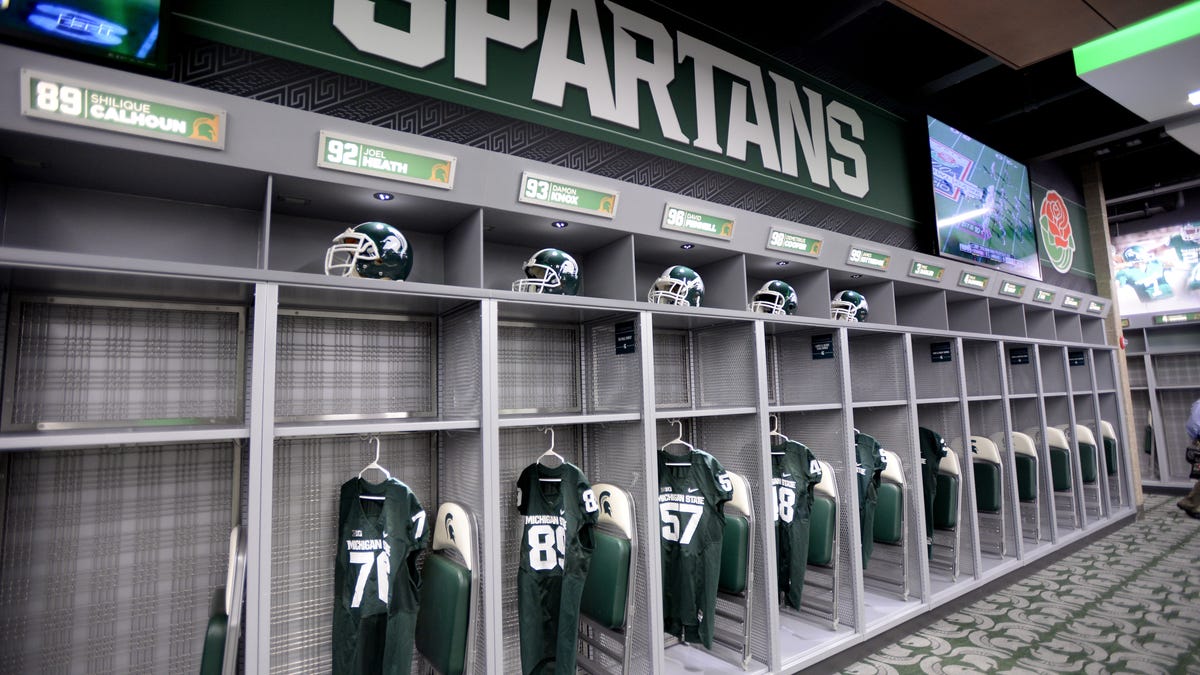Connecticut’s state government seems to think that illegal immigration isn’t a problem here, just – maybe – in other states. The other day state officials gathered with advocates of illegal…
Purchase a Subscription and Register

With numerous wrong-way crashes and fatalities on Connecticut highways, state lawmakers called Wednesday for making it easier to arrest drunken drivers.
The legislature’s transportation committee is debating a bill that calls for reducing the drunken driving arrest threshold to 0.05% blood alcohol content, down from the current .08.
Thomas B. Chapman of the National Transportation Safety Board testified via Zoom in favor of lowering the limit, a position by the NTSB since 2013. Utah became the first state to do so in 2018 and has seen a drop in fatalities.
Dropping the level, Chapman said, would lower the death rate by an estimated 11%. Like Connecticut, other states that are currently considering .05 are Hawaii, Washington, New York, North Carolina and others.
“We are an outlier,” Chapman said, referring to the United States. “Over 100 countries in the world have .05 or lower … That includes much of Europe, where drinking is part of the culture. What is not part of the culture is drinking and driving. … You are impaired at .05. … There is a demonstrable diminishment in cognitive and physical skills at that level.”
Noting that some drivers would not be deterred and would ignore lower levels, Chapman said, “.05 is not the entire answer on this. It is a piece of the answer.”
Nationally, 13,384 people died in the United States in alcohol-related crashes in 2021, the most recent year where complete numbers are available. That includes 112 alcohol-related deaths in Connecticut.
State transportation Commissioner Garrett Eucalitto, testifying remotely Wednesday from a transportation meeting in Philadelphia, said, “What we have been doing as a state has not been working. … Drunk driving is a reckless choice made by the driver. … Everyone is impaired at .05. I know some people might argue with that … but the science is clear.”
Saying that Connecticut could emulate Utah, Eucalitto said the change to .05 did not decrease tourism or alcohol sales in Utah.
Marijuana impact
While the impact of drunken driving has been well documented for years, state legislators are also questioning the influence of the recent decriminalization of marijuana in Connecticut. Drivers smoking pot become impaired, and police have complained repeatedly that they do not have a simple test for marijuana in the way they can measure blood levels for alcohol.
Marijuana has been involved in some fatal accidents, and both drivers had traces of marijuana in their blood in the wrong-way crash last year that killed state Rep. Quentin “Q” Williams of Middletown after he left the governor’s inaugural ball in Hartford.
Rep. Thomas O’Dea, a New Canaan Republican, said lawmakers need to focus closely on the impact of cannabis on car crashes.
“That’s the elephant in the room in my opinion,” O’Dea said. “My biggest problem is the marijuana laws in Connecticut.”

Mark Mirko/The Hartford Courant
Sen. Tony Hwang of Fairfield is concerned about drivers who have been smoking marijuana and got involved in car crashes.
State Sen. Tony Hwang of Fairfield, the committee’s ranking Senate Republican, said the combination of marijuana and alcohol can be deadly.
“Impairment of any kind is part of the danger on the roads,” Hwang told Chapman. “If we only handle one part and not address the other, it may be a half-completed task. … If you lack common sense, you’re still going to have violators on the roads.”
Chapman responded that alcohol remains the biggest problem, but there is an “increasing prevalence of other impairing substances” that include marijuana.
“It is a growing problem — one that we are concerned about,” Chapman said. “It’s not as easy to test these other substances.”
He noted that airplane pilots have an even higher standard that keeps the skies safe. He noted that pilots avoid alcohol before flying under the mantra of “eight hours from bottle to throttle.”
State Rep. Devin Carney, an Old Lyme Republican, said, “We talk about Big Tobacco, Big Pharma, but we don’t talk about Big Alcohol.”
In an attempt to reduce crashes, the committee voted last year to lower the blood alcohol level for arrest. The measure passed by 21-15 with Republicans and Democrats on both sides of the bipartisan issue. The bill, however, never passed in the state House of Representatives and Senate before time expired.
The measure is part of a broader plan to reduce a skyrocketing number of fatalities on Connecticut roads. Legislators were stunned at 366 deaths on the roads in 2022 — about one per day. The statistics show that 2022 was the worst year on Connecticut roads since 1989. While fatalities dipped to 323 last year, the accidents are continuing this year.
If approved, Connecticut would follow Utah as the second state in the nation at .05. The national standard is .08 that states have enacted in order to avoid losing funding for federal highway construction. As a result, Connecticut is currently at the same level as nearby New York, Massachusetts, Vermont, New Hampshire and Rhode Island.
Wednesday marked the committee’s final public hearing of the 2024 legislative session as nearly 60 people signed up to testify. No decisions were made Wednesday, but all bills are subject to final approval by the full House of Representatives and state Senate before the regular session adjourns on May 8.
Statistics
Besides .05, the committee is working on overall traffic safety, including the deaths of pedestrians and a rash of wrong-way crashes on the highways.
In 2022, the 366 overall deaths were the highest in 33 years. Another peak in 2022 was 73 pedestrian fatalities, compared to 55 pedestrians in 2019 and 2021 and 51 last year.
Motorcycle deaths have claimed 68, 66, and 62 lives over the past three years, up sharply from 49 in 2019.
Wrong-way crashes also peaked in 2022 with 13 accidents that led to 23 fatalities, the highest total by far in recent years. Last year, the total dropped back down to 7 fatalities — still above the levels of four each in 2020 and 2021.
Christopher Keating can be reached at ckeating@courant.com


“We have more people employed” is one of the many things Gov. Ned Lamont touted earlier this week in response to a claim that Connecticut’s economy is continuously weakening.
The criticism came from Fred Carstensen, a professor and economist at the University of Connecticut who heads the Connecticut Center for Economic Analysis, and it was asked during a one-on-one interview on Tuesday between The Connecticut Mirror and Lamont.
“Right now, we have the fastest growing economy in the northeast by a little bit,” Lamont continued.
But what makes an economy “grow” and be “fast”? It depends on whom you ask, and it’s often more complicated than looking at one single measure. One might consider inflation, income distribution, cost-of-living, total output, exports and many other factors, each of which paints a different picture of the state’s economy.
One common way to look at it, though, is by considering employment — how many people are working, how many are eligible, how many are looking to work and so forth.
Lamont said that there are more people employed now than before. Is that true? According to data from the U.S. Bureau of Labor Statistics, it depends on the time frame. The average number of people employed in 2023 in Connecticut was 1.822 million, which is a:
• 0.63% decrease from the 2022 average (1.833 million → 1.822)
• 2.16% decrease from 2019 (1.862 million → 1.822)
• 6% increase from 2013 (1.718 million → 1.822)
• 5.7% increase since 2000 (1.723 million → 1.822)
More people are employed in Connecticut than decades ago, but that’s normal of any state that’s seeing an increase in population.
While the number of employed people grew in the state by 5.7% since 2000, the 16-and-over population increased by 12% — a difference not unexpected, as Connecticut’s population is aging, along with other factors.
Another measure that shows this relationship is the employment to population ratio. In 2000, the ratio of employed people to the total population was 65%. In 2023, it was 61.8%. Decreases were seen for every other New England state as well.
Shorter-term, there were fewer people employed last year than before the pandemic in 2019, when Connecticut saw a record number of workers at 1.862 million. All New England states except Rhode Island experienced a decrease in the number of workers since 2019.
The portion of the population that isn’t working could be either not part of the labor force or unemployed. The number of people that are unemployed or looking for a job out of the entire labor force makes up the unemployment rate.
The 2023 unemployment rate for Connecticut was 3.8%, the highest in New England, but any “unemployment rate around 4% would be considered low by historic standards,” writes a researcher from the state’s Department of Labor in the March 2024 edition of the Connecticut Economic Digest.
The unemployment rate has been falling since 2020, a sign of recovery from the pandemic, but the rate is still slightly higher than before the pandemic, a trend also seen for Massachusetts but not for any other New England state. In 2019, the unemployment rate in Connecticut was 3.6% while in 2023 it was 3.8%.
The 2023 unemployment rate is not as low as levels seen in 2000, when it reached 2.1%, but it’s still lower than the 4.9% rate seen in 1990.
Some argue that an increasing unemployment rate can be a good thing, despite its negative connotation. In a September 2022 national analysis, a time when the unemployment rate rose, the chief economist at the U.S. Department of Labor at the time wrote that, “The unemployment rate rose for a positive reason — more unemployed workers began seeking jobs.”
If more people are joining the labor force by looking for a job, the unemployment rate will go up, since there will be more people classified as “unemployed.”
There’s also a measure known as the labor force participation rate, which combines both measures discussed above: The employed plus the unemployed as a share of the total working age population.
In 1990, Connecticut’s labor force participation rate was 70.6%, but last year it sat at 64.2%. This decades-long decreasing trend is also seen for other New England states and is associated with an aging population and a decrease in participation from certain groups of men, as explained by researchers from the U.S. Census Bureau and the Federal Reserve Bank of Philadelphia.
In recent years though, the 2023 participation rate has recovered from a historic low in 2021, but it is not yet back to levels seen in 2019 before the pandemic, where the rate was 66.3%, just 2.1 percentage points higher than last year’s rate.
So what does this all mean? Lamont was right in that there are more workers now than decades ago, but that’s expected if the population of a state is growing. But when taking that into account, the number of workers is not increasing as fast as the 16-and-older population. As of last year, employment numbers and labor force participation rates for the state are still not at pre-pandemic levels, and the unemployment rate is higher, although decreasing.
And among New England states, Connecticut last year had the highest unemployment rate and the third-lowest labor force participation rate, but it wasn’t the only New England state to see decreases.

Connecticut’s state government seems to think that illegal immigration isn’t a problem here, just – maybe – in other states. The other day state officials gathered with advocates of illegal…

The Connecticut Department of Transportation estimates that northbound lanes of Interstate 95 in Norwalk closed by a fiery crash will reopen to vehicles by 8 p.m. on Saturday, May 4, according to Gov. Ned Lamont.
Lamont and Connecticut Transportation Commissioner Garrett Eucalitto said Saturday that DOT crews and contractors “stayed at the site of the Fairfield Avenue Bridge throughout Friday night and continued working through the early hours of Saturday morning when additional equipment needed to remove the damaged bridge arrived.”
The crews completed the bridge demolition by 12:30 p.m. on Saturday.
The fiery crash on Thursday involving a tractor-trailer and a tanker carrying 8,500 gallons of fuel led to a massive fire left both sides of Interstate 95 in Norwalk shut down as crews assessed and repaired the damage the blaze caused to utilities and a bridge in the area.
The crews then began cleaning up “all the debris and materials from the bridge off the highway. They also began making necessary repairs to the highway to ensure that it is safe for vehicular traffic,” Lamont said in a statement Saturday night.
CT officials: I-95 shut down for extended period following fiery crash; bridge has to ‘come down’
“Crews are making great progress in Norwalk and I am encouraged that we’ll have one side of I-95 open later tonight,” Lamont said, in an emailed statement. “Completely removing that bridge in less than 36 hours is an impressive feat and is credit to the hard work and dedication of the contractors and Connecticut Department of Transportation crews, who are pushing to get the entire highway fully reopened in both directions by Monday morning.”
The statement noted that southbound lanes of I-95 will remain closed to vehicles through the day on Sunday, May 5, “because the pavement on this side of the highway was so damaged from the Thursday morning crash that those lanes need to be milled and repaved.”
Eucalitto said, “I continue to be thankful to the CTDOT crews and contractors who are working as hard as they can to get this highway reopened.”
“They made great progress today and I remain optimistic that we will meet our Monday morning deadline,” Eucalitto said. “I ask the public to remain patient with the ongoing traffic congestion and to continue using alternate routes and public transportation throughout the weekend.”
Norwalk Mayor Harry Rilling praised the response from the Norwalk Fire Department, Norwalk Police Department, and the state, including Lamont’s office, the DOT, the Division of Emergency Management and Homeland Security and state police.
“The fact that there were no injuries from the accident and that crews are working incredibly quickly to remove the bridge so we can reopen I-95 in both directions as soon as possible is a testament to Governor Lamont’s leadership and the high level of collaboration between each agency and level of government,” Rilling said. “I also want to thank our Norwalk residents and business community for their patience, as I know these temporary closures have been a complete inconvenience to their lives.”
A live video feed of the work can be seen at https://share.earthcam.net/CTDOTNorwalkbridge.
The statement noted that drivers are asked to remain patient and follow all posted signs and that commercial vehicles are asked to continue using alternate routes through Fairfield County until further notice.


EU Parliament leaders recall term's highs and lows at last sitting


GOP lawmakers demand major donors pull funding from Columbia over 'antisemitic incidents'


Hamas ‘serious’ about captives’ release but not without Gaza ceasefire


How to buy JC Latham’s Tennessee Titans jersey after 2024 NFL Draft selection


Both sides prepare as Florida's six-week abortion ban is set to take effect Wednesday


Columbia University’s policy-making senate votes for resolution calling to investigate school’s leadership


Michigan State football adds DT Brandon Lane from Stephen F. Austin


House Republicans brace for spring legislative sprint with one less GOP vote